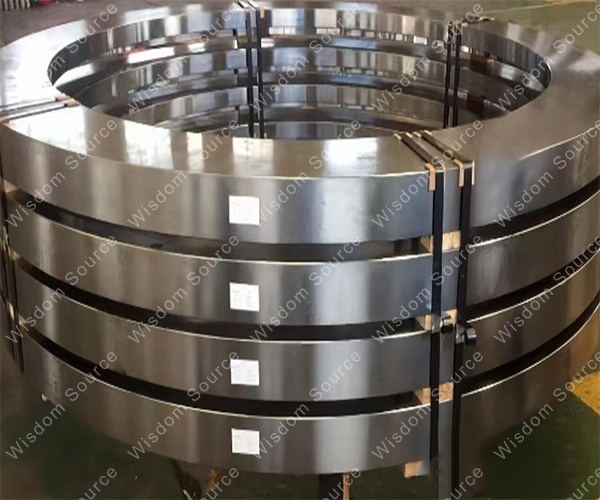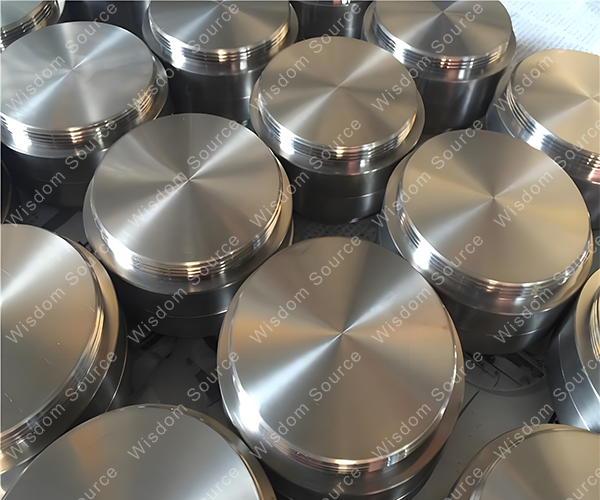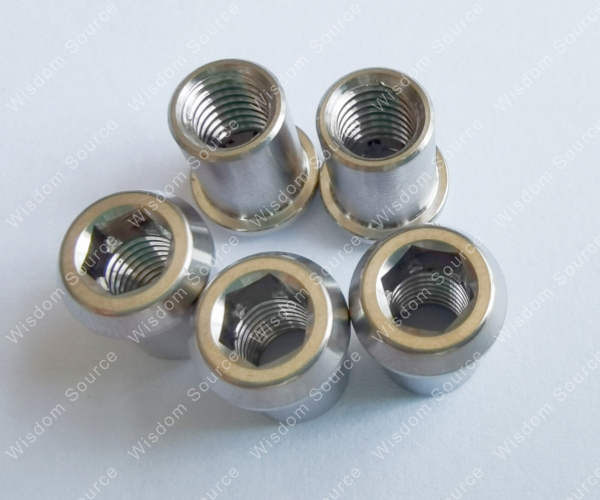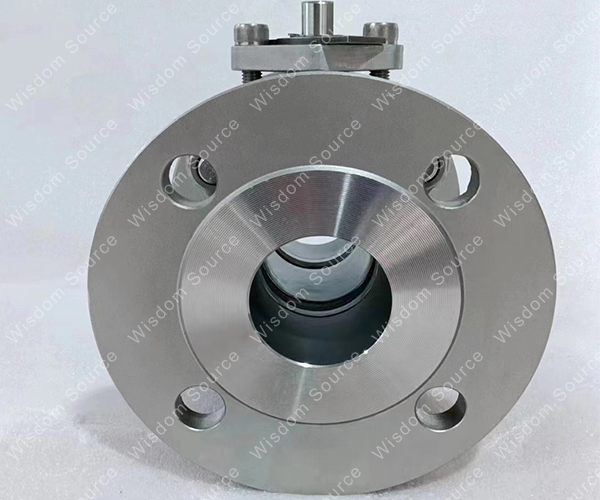Research On The Surface Treatment Technology Of Titanium Alloy And Its Corrosion Resistance Improvement Mechanism
Research On The Surface Treatment Technology Of Titanium Alloy And Its Corrosion Resistance Improvement Mechanism
With its excellent specific strength and corrosion resistance, titanium alloys play an important role in high-end fields such as aerospace, marine engineering and bio-medicine. However, under certain service environments, problems such as pitting corrosion, stress corrosion and galvanic corrosion may occur on the surface of titanium alloys, which limits the further expansion of its application range. As an effective means to improve the corrosion resistance of titanium alloys, surface treatment technology significantly improves the corrosion resistance of titanium alloys by changing the physical and chemical properties of the material surface. This article will delve into the mechanism of the influence of different surface treatment technologies on the corrosion resistance of titanium alloys, and provide guidance for engineering practice.
Research Background On Corrosion Resistance Of Titanium Alloy
As a new generation of key structural materials, titanium alloy's performance optimization is of great significance to the development of modern industry. Harsh working conditions such as aviation engine turbine blades, marine engineering equipment, and biomedical implants put forward extremely high requirements for the corrosion resistance of titanium alloys. Studies have shown that the surface of Ti-6Al-4V alloy will oxidize under high temperature oxidation environment, which affects the strength and durability of the material. Therefore, improving the corrosion resistance of titanium alloys is of great significance to extend the service life of key components, reduce maintenance costs, and ensure the safe operation of engineering equipment.
Classification Of Titanium Alloy Surface Treatment Technology
1. Chemical Treatment Technology
Chemical treatment technology uses the reaction of the titanium alloy surface with chemical reagents to form a protective oxide film or other functional coating.The high-concentration NaOH or H2O2 treatment process can form a stable surface oxide layer, and the acid-base pre-treatment combined with rapid calcification solution soaking method can form a bio-ceramic coating on the surface of GR5 titanium alloy. Chemical treatment has the advantages of simple process and low cost, but the oxide film obtained by traditional chemical oxidation is thinner, which may affect the subsequent electroless plating and electroplating processes.

2. Heat Treatment Technology
Heat treatment technology changes the physical and chemical properties of the surface of the material by applying different temperature conditions to the titanium alloy and controlling the cooling method. Laser quenching and laser cladding technology can realize the refinement of the surface structure of titanium alloy and the improvement of hardness, while the heat treatment of copper alloy coating can choose copper-aluminum, copper-silicon and other alloy systems for coating, providing more options for the regulation of material surface properties.
3. Electro-chemical Treatment Technology
Electro-chemical treatment technology mainly includes traditional anodizing and micro-arc oxidation processes.Micro-arc oxidation technology uses the instantaneous high temperature and high pressure environment in the micro-arc discharge area to directly convert the surface of the titanium alloy into an oxide ceramic film, which significantly improves the wear resistance and corrosion resistance of the titanium alloy.
4. Physical Vapor Deposition Technology
Physical vapor deposition (PVD) technology improves the surface properties of the material by depositing a hard protective layer on the surface of the titanium alloy. This technology can deposit diamond, titanium carbide, graphene and other functional materials on the surface of titanium alloys to improve the hardness and corrosion resistance of the materials. PVD technology has the characteristics of strong process control-lability and good coating binding force.
5. Ion Implantation Technology
Ion implantation technology accelerates specific ions and bombards the surface of the titanium alloy to form a modified layer with unique properties at the material surface interface.Studies have shown that this technology can significantly improve the surface structure and tri-bological properties of titanium alloys, and improve the corrosion resistance of the material.

Effect Of Surface Treatment Technology On Corrosion Resistance
1. Effect Of Chemical Treatment On Corrosion Resistance
Chemical treatment technology improves the corrosion resistance of the material by constructing a protective oxide film on the surface of the titanium alloy. The high-concentration NaOH or H2O2 treatment process can form a stable oxidation protective layer on the surface of the material, effectively blocking the erosion of the substrate by the corrosive medium. In the field of biomedical applications, a bio-ceramic coating can be constructed on the surface of titanium alloy through a composite process of acid-base pre-treatment combined with rapid calcification solution soaking. This coating has good biocom-patibility and corrosion resistance properties.
2. Effect Of Heat Treatment On Corrosion Resistance
The appropriate heat treatment process can optimize the oxide film structure on the surface of the titanium alloy, thereby improving its corrosion resistance.Vacuum heat treatment technology can effectively inhibit the high-temperature oxidation behavior of the surface of titanium alloy, while high-frequency induction heat treatment technology forms a nanocry-stalline layer on the surface of titanium alloy through rapid heating and controlled cooling to improve the corrosion resistance of the material.
3. Effect of Electro-chemical Treatment On Corrosion Resistance
Electro-chemical treatment enhances the corrosion resistance of titanium alloys by constructing a special oxide layer on the surface.During the anodizing process, by regulating the composition and electrochemical parameters of the electrolyte, an oxide film with different structural characteristics can be formed on the surface of the material, which can significantly improve the corrosion resistance of the material.

4. Effect Of Physical Vapor Deposition On Corrosion Resistance
As an important branch of PVD, magnetron sputtering technology significantly improves the corrosion resistance of the material by depositing multiple nitride coatings such as CrN and TiAlN on the surface of the titanium alloy. These coatings exhibit excellent chemical stability in a high temperature oxidation environment, effectively preventing the diffusion of corrosive media to the substrate.
5. Effect Of Ion Implantation On Corrosion Resistance
Ion implantation technology bombards the surface of titanium alloy with high-energy ion beams to form a modified layer with a special organizational structure on the surface of the material.During the implantation of nitrogen ions and carbon ions, the compound phase and diamond-like carbon structural layer formed significantly improve the chemical stability of the material surface and effectively prevent the penetration of corrosive media into the matrix.
Challenges Of Titanium Alloy Surface Treatment Technology
The current titanium alloy surface treatment technology still faces challenges in terms of process stability and consistency of treatment effect.During chemical and electro-chemical treatment, the thickness and performance distribution of the surface modified layer may be uneven, which affects the overall corrosion resistance of the material.At the same time, the high input cost and large energy consumption of high-energy surface treatment technology and equipment restrict its popularization and application in the industrial field. In addition, the surface-treated titanium alloy may have problems such as coating peeling and reduced inter-facial binding strength under high temperature service environment.

Optimization Path Of Titanium Alloy Surface Treatment Technology
In view of the problems of process stability and consistency of processing effect, the precise regulation of processing parameters can be realized through the introduction of intelligent control system.In the process of chemical and electro-chemical treatment, real-time monitoring technology is used to dynamically adjust key parameters, and computer simulation is used to optimize the process parameter window, which can effectively improve the uniformity and stability of the surface modified layer. In order to solve the problem of high cost of high-energy surface treatment technology, composite treatment process routes can be developed to give full play to the advantages of different treatment methods. At the same time, optimize the design of tooling and fixtures, adopt multi-pole target material layout and multi-degree-of-freedom movement of work pieces, etc., to improve the processing effect of complex-shaped work pieces. In terms of inter-facial binding strength, through the introduction of functional gradient design concept and new surface pre-treatment technology, the metallurgical combination of the modified layer and the matrix is enhanced, and the service reliability is improved.
Titanium alloy surface treatment technology plays a key role in aerospace, marine engineering and biomedical fields. Diversified surface treatment methods provide technical support for improving the corrosion resistance of materials. However, issues such as process stability, processing uniformity and cost-effectiveness still restrict its further development. In the future, we should focus on the development of intelligent control systems, composite processing processes and new interface control technologies to promote the innovation and upgrading of processing technologies. This will significantly improve the service performance and service life of titanium alloys, expand their application fields, and provide a more reliable material guarantee for the development of modern industry. At the same time, these technological innovations will also promote the overall progress of surface engineering disciplines and provide an important technical reference for the development of new functional materials.
